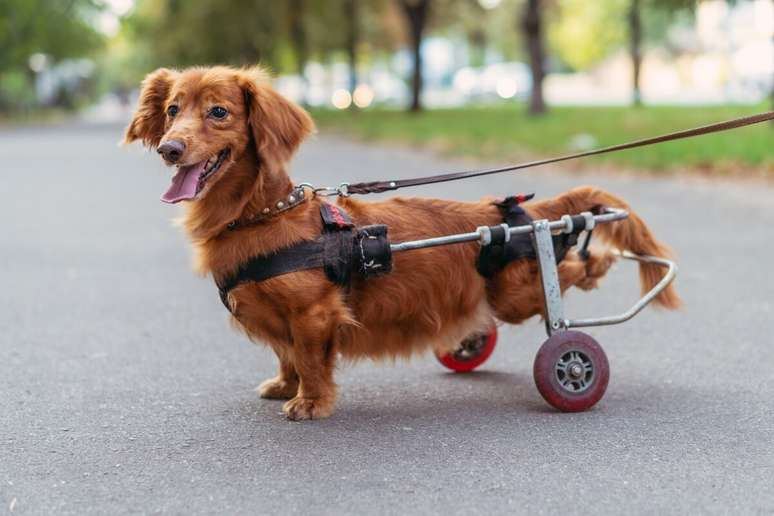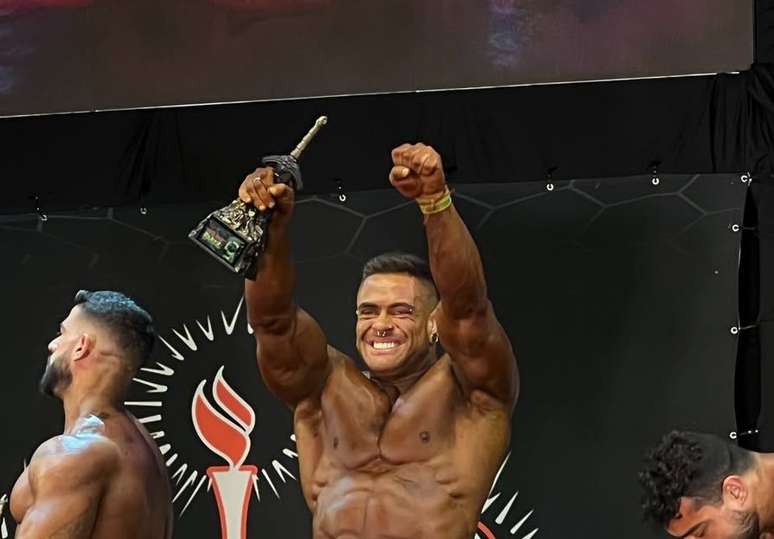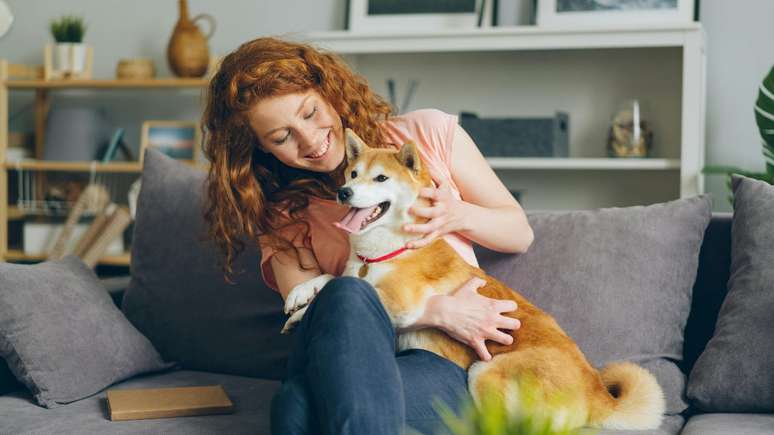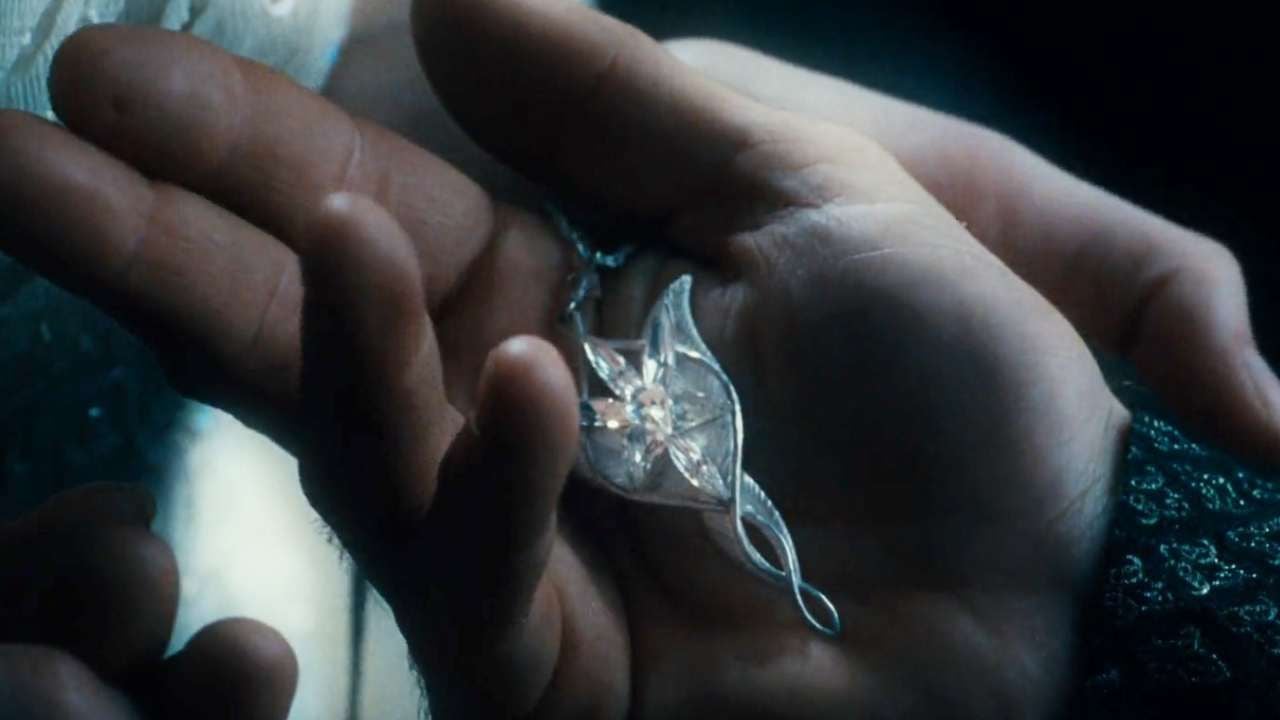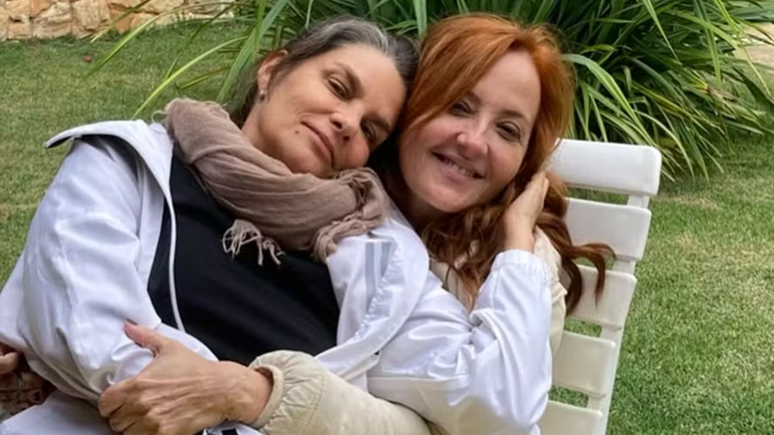Find out how you can ensure the health and quality of life of these animals in the correct way
Whether due to physical, motor, auditory or even visual problems, an animal can be born or acquire some disabilities during its life, but this does not prevent it from having one. pet. The fact is that, with some adaptations, they can have a good quality of life and transmit love to their owners, even if there is still a lot of prejudice and misinformation when it comes to them.
According to the care booklet pets with disabilities, from the Instituto Cão de Rodinhas, which in its 2nd edition presents new chapters in collaboration with the Petlove – Love que Transforma project, there are some signs that may indicate a disability in the animal:
- Difficulty walking, running, climbing stairs, maintaining balance, or limping;
- Lack of reaction to sounds, such as not responding when called or when someone arrives;
- Bumping into objects, difficulty finding people, food, or water;
- Disorientation, sudden changes in behavior, eating or sleeping habits, loss of existing abilities, or urinary incontinence.
Equipment and care items
Regarding equipment, Pedro Risolia, Petlove veterinarian, explains that, in general, all cases of animal deficiency must be assessed, advised and monitored by a professional “Before purchasing any equipment for pet disabled, consult a veterinarian to understand the need and avoid inadequacies”, he underlines.
Below, check out some equipment and items that can be used by animals, depending on the type of disability:
1. Wheelchair
Typically, tutors pets with some paraplegia or reduced mobility, if not oriented correctly, believe that the wheelchair must be used all day. However, this is one of the myths that the Instituto Cão de Rodinhas brochure dispels with correct information and guidance.
For safety reasons, the equipment should be used for a maximum of 40 minutes at a time and always under the supervision of the owner. It is an exercise machine that helps the animal expend energy, play with other animals faster, keep the spine in a stationary position (anatomical position of 4 supports) for a few moments during the day, as well as helping in physiotherapy.
According to the booklet, a wheelchair for animal use must be approved by a veterinarian and must be custom-made for the animal. pet. In these cases, most of the time, the pet It must have a drag bag with protection and attention must be paid to wound prevention to avoid infections.
An animal with a physical disability, after a veterinary evaluation, may need a prosthesis, which replaces the missing body part, or an orthosis, which helps the limb perform its function, without requiring the famous wheelchair. .
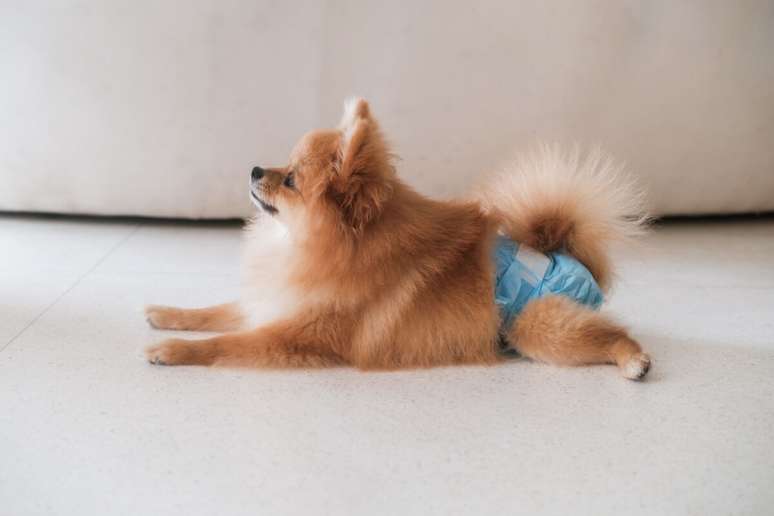
2. Diapers
According to the Instituto Cão de Rodinhas brochure, paralyzed dogs and cats may not be able to control their urine and may show signs of incontinence, requiring the use of diapers. In general, the change should be carried out approximately four or five times a day, to avoid irritation and infections, which may vary depending on the needs of the animal.
Cleaning the intimate area of pet it should be done with a moistened handkerchief or even with an antiseptic, to avoid the accumulation of bacteria in the area. Emptying the bladder must be carried out completely, at least three or four times a day, depending on the volume of urinary production of each animal.
3. Harness for blind dogs
According to Petlove veterinarian, Pedro Risolia, for dogs with visual impairments, a specific harness can be used, which facilitates the animal’s movements. “The garment can protect the head from friction and accidents, reducing the risk of injury,” he points out.
4. Balancing platforms
Pedro Risolia says platforms can be useful for physical activities. There are products such as training platforms, balls, supports and discs specific for the animal’s balance. This category, more focused on balance, can aid in physical conditioning, building muscle, improving coordination and promoting strength, and can also be useful in the animal rehabilitation process.
5. Pelvic support
Petlove’s veterinarian explains that the product helps the pet in their mobility, as it relieves pressure on the hind legs and joints, distributing the weight on the hips and abdomen. “Its use is recommended to assist with activities such as getting up, walking and climbing stairs,” he adds.
6. Protection of limbs
Pedro Risolia describes that the accessory is recommended for protecting dressings, splints, wounds and can also be useful after surgery. The protector prevents the animal from accessing the sensitive area, avoiding licking and scratching which could aggravate the injury.
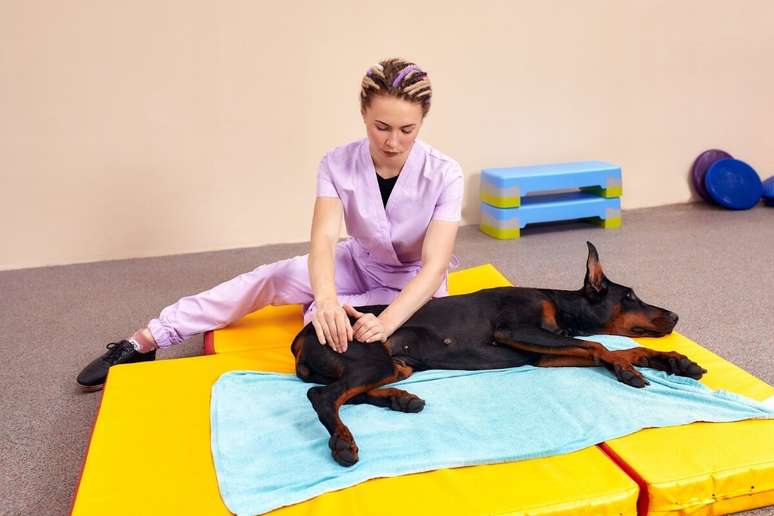
7. Physiotherapy
According to the brochure from the Instituto Cão de Rodinhas e Petlove, physiotherapy is one of the most effective methods to help animals improve mobility, prevent compensatory pain, strengthen muscles and reduce atrophy. Additionally, physiotherapy stimulates blood circulation, aiding in recovery and healing of injuries.
The service can bring a number of benefits such as maintaining muscle mass; improvement of joint range of motion; joint conservation; improved coordination and balance; return to locomotion in reversible lesions; maintaining the quality of life of animals with irreversible lesions; pain control, decreased inflammation, accelerated tissue repair; improvement of proprioception – body awareness and minimization of neurological sequelae.
Importance of a balanced diet
The brochure proposes that a quality and balanced diet is essential for animals with disabilities and that through it it is possible to treat and prevent various clinical conditions. A balanced diet and attention to quantities can guarantee a longer and happier life, as well as preventing the development of conditions that can harm the clinical condition of animals.
The veterinary content added by Petlove as a collaboration for the Instituto Cão de Rodinhas material presents the idea that pets Those who suffer from it may have a more fragile immune system or need a greater intake of certain nutrients. This can be due to several reasons, depending on the type of deficiency, which require a veterinary recommendation to set or adapt the diet.
“You need to consult a professional to draw up a food plan, as different aspects need to be taken into account, such as species, breed, age, size, disability and even individuality”, underlines the Petlove veterinarian.
By Gustavo Mattos
Source: Terra
Ben Stock is a lifestyle journalist and author at Gossipify. He writes about topics such as health, wellness, travel, food and home decor. He provides practical advice and inspiration to improve well-being, keeps readers up to date with latest lifestyle news and trends, known for his engaging writing style, in-depth analysis and unique perspectives.

